The Patriot Hellfire M.2 480GB Review: Phison NVMe Tested
by Billy Tallis on February 10, 2017 8:30 AM ESTATTO
ATTO's Disk Benchmark is a quick and easy freeware tool to measure drive performance across various transfer sizes.
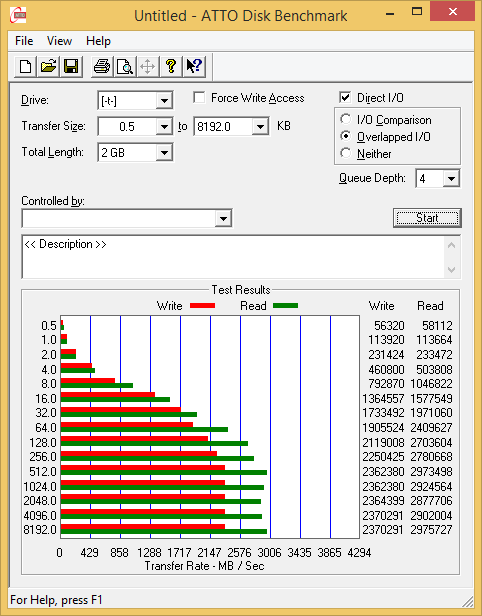 |
|||||||||
With write speeds that exceed 2.3 GB/s and read speeds that almost hit 3 GB/s, the Patriot Hellfire has no trouble delivering very high performance on shorter tests and with compressible data. Performance scales well with transfer size until around 64 kB, after which it takes quite a while for performance to fully saturate.
AS-SSD
AS-SSD is another quick and free benchmark tool. It uses incompressible data for all of its tests, making it an easy way to keep an eye on which drives are relying on transparent data compression. The short duration of the test makes it a decent indicator of peak drive performance.
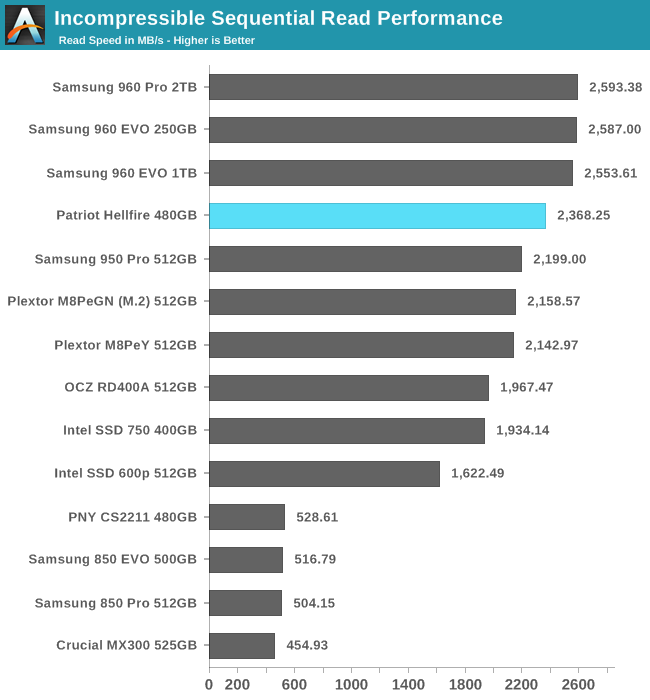
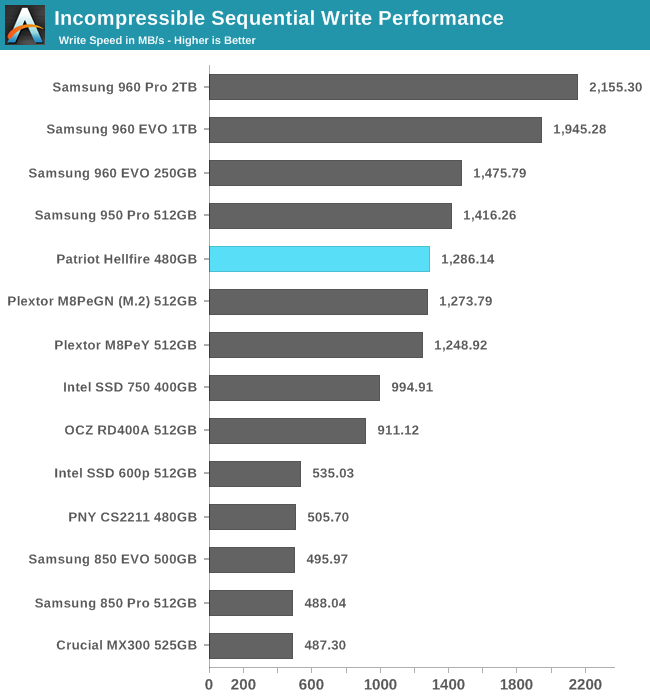
The Patriot Hellfire can't quite keep up with Samsung's latest generation, but it still ties or slightly beats the rest of the competition even though the use of incompressible data slows it down some.
Idle Power Consumption
Since the ATSB tests based on real-world usage cut idle times short to 25ms, their power consumption scores paint an inaccurate picture of the relative suitability of drives for mobile use. During real-world client use, a solid state drive will spend far more time idle than actively processing commands. We report two measures of idle power consumption: active idle where the SSD is not in use but has not been put in to any low-power sleep state, and idle power consumption in the deepest sleep state supported by our testbed. For NVMe SSDs, the lowest drive power state is measured but PCIe Active State Power Management (ASPM) is not used due to limitations of this motherboard. For SATA SSDs, aggressive link power management is used to put the SATA link into slumber state. Many SSDs support a deeper DevSleep state, but this cannot be engaged using ordinary desktop platforms.
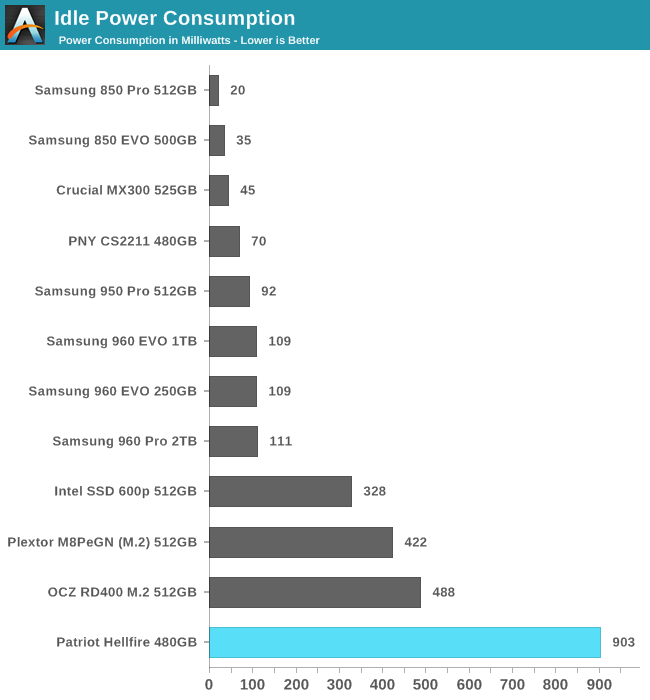
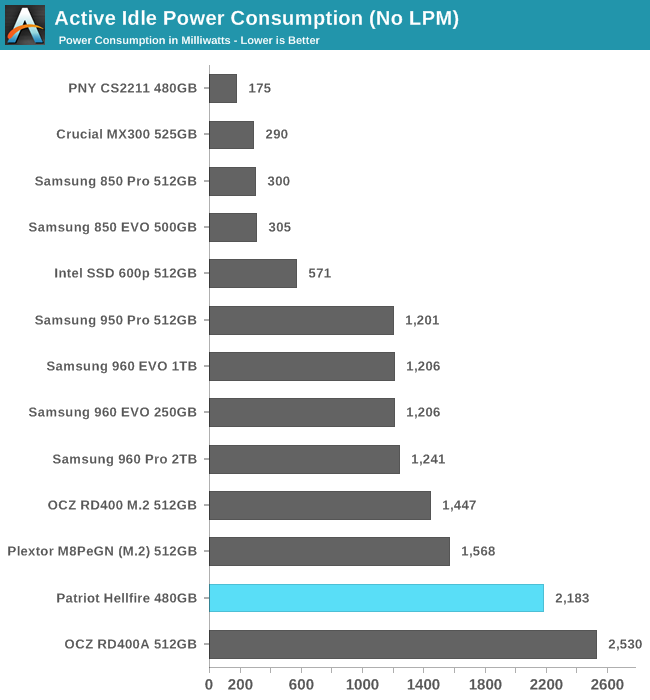
The Patriot Hellfire has by far the worst power management, and is barely able to get below 1 W even in the deepest low-power state. If NVMe power saving is not used, the Hellfire never drops below 2 W. This means the Hellfire starts out any performance test far closer to thermal throttling than any other SSD. (The OCZ RD400A is using slightly more power than the Hellfire because of the overhead of its 12V to 3.3V conversion circuit.)










43 Comments
View All Comments
BrokenCrayons - Tuesday, February 14, 2017 - link
Or Ripjaws...ugh where's my dentist at? It must work or at least not hurt sales too much if companies haven't stopped doing it yet. In fact, it's probably less about the name and more about product differentiation. Everyone sells a NVMe SSD but only one company sells a Hellfire NVMe SSD. Everyone sells a 32GB dual channel 3000MHz DDR4 kit but only one company sells a Viper version thereof for instance. Doing so, even with a relatively stupid name, leads to better brand recognition among consumers and we all know based on our experiences reading peoples' comments about computer hardware, cars, staplers, and energy drinks how important building brand loyalty becomes for those customers that can be sucked into the marketing.MR_Roberto - Monday, February 27, 2017 - link
Wait... so the ASUS Z97 Pro has NVMe M.2 PCIe 3 x4 ? .... I thought the motherbaord was limited to a M.2 PCIe 2x4 "2000 MB/max"........ because I have a ASUS Z97 PRO" wifi" and these means I can get a M.2 card /o/ , I was afraid my m.2 slot was limited and uselessUser11bfw - Saturday, July 28, 2018 - link
For no civic product „Hellfire“ is a reasonable name. Using the association with a deadly weapon exhibits a disgusting taste.